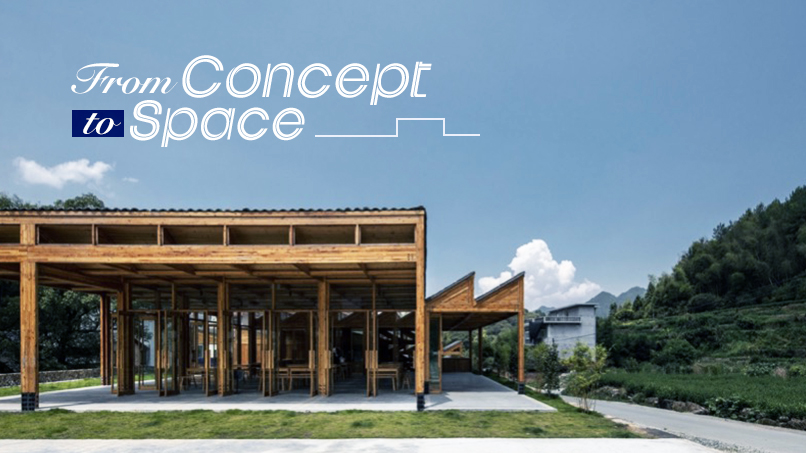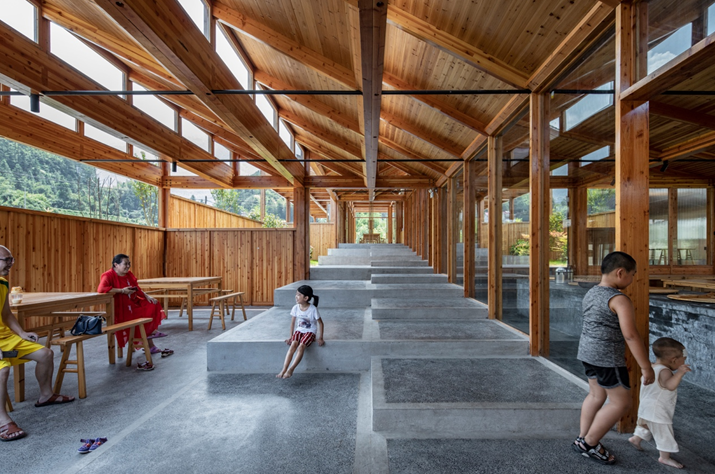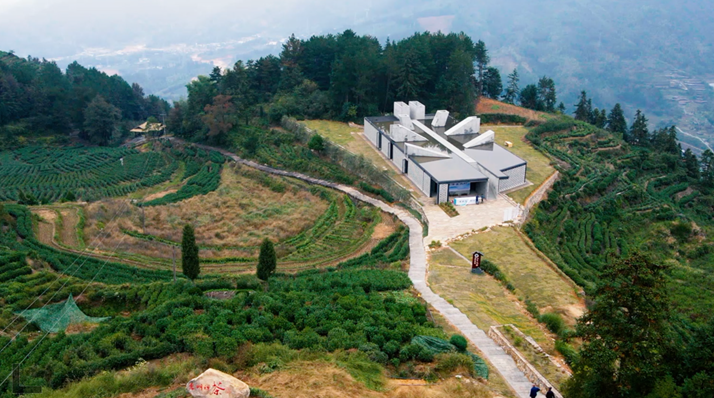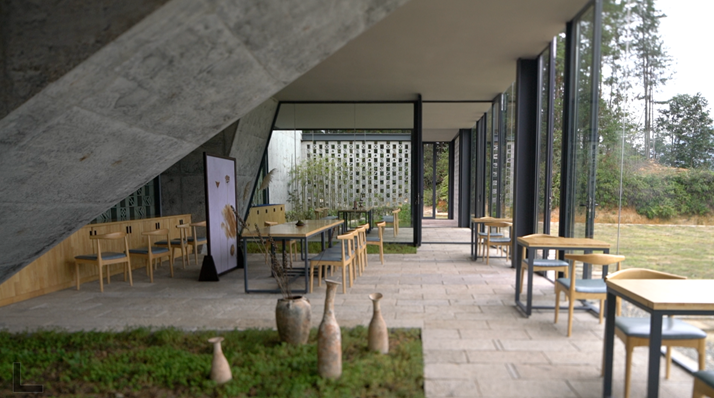04:08

"Architectural culture is attractive. It's a work style that can be popularized. But when it comes to a single village, the unique history of each one should be respected," said Chinese architect Xu Tiantian, the founder of DnA_ Design and Architecture.
Xu has been working on an architectural "acupuncture strategy" to revitalize rural areas. Buildings her studio has designed are integrated into the historical context of a location by using local materials and construction techniques.
"Implanting architecture in the village is actually a way to revitalize the rural area," Xu said.
Acupuncture strategy, or acupuncture architecture, she explains, is achieved "through small-scale architectural functions, according to the historical context of each village, its specific conditions, or for example, its characteristic techniques, etc..."

The walkway inside the tofu factory at Lishui City, Zhejiang Province. /CGTN
The walkway inside the tofu factory at Lishui City, Zhejiang Province. /CGTN
The tofu factory in Caizhai village
Caizhai village in Songyang in east China's Zhejiang Province has a reputation for making the best tofu in the whole county. A new tofu factory, designed by Xu's firm, has opened just near the entrance to the village.
Both a production venue and exhibition space for Caizhai's traditional heritage, it extends along the slope with four production sections and a walkway for visitors to observe the traditional tofu-making process.
The factory has not just made a mark aesthetically: by integrating the production flow of tofu, homemade by family workshops, the factory also upgraded traditional tofu-making to meet the requirements for selling the product in markets, helping to increase the village's revenue.
"When you sincerely communicate with villagers, you will find that all of them have something they are proud of. The tofu made in Caizhai is the best in the county," Xu said.
In 2019, the village attracted more than 2,500 tourists every month on average. With this new site, it could attract many more.

Huimingsi village in Zhejiang's Jingning She Autonomous County. /CGTN
Huimingsi village in Zhejiang's Jingning She Autonomous County. /CGTN
Like Caizhai village, Huimingsi village in Zhejiang's Jingning She Autonomous County is famous for its local product: fragrant Huiming green tea.
Another creation by Xu's studio, Huiming Tea Factory is an award-winning piece of architecture and a model of engagement with rural revitalization processes.
The factory's interior includes areas for tea-making, visitor experiences and tea tasting. An area on the roof allows people to bask in the sunlight and interact with nature.
The factory also created a tea culture museum to highlight traditional tea-making crafts and tea ceremonies.

Indoor design at Huimingsi village in east China's Zhejiang Province. /CGTN
Indoor design at Huimingsi village in east China's Zhejiang Province. /CGTN
The brick pattern on the exterior walls lets the sun shine in, and the bricks themselves are decorated with hieroglyphs from the She minority's language. A green wall represents the different shades of Huiming tea in different tea-making processes.
During the summer solstice, rays of sunshine channeled through light shafts vitalize the whole architecture, integrating space with time. Visitors can see the tea-making process through a glass window and feel the combination of motion and quiet.
As Xu puts it: "We want to express the relationship between human and nature, between our planet and the sun."
(Cover image designed by Du Chenxin)

